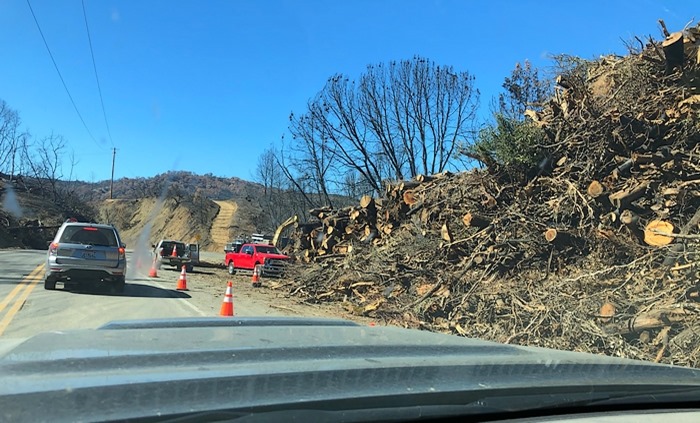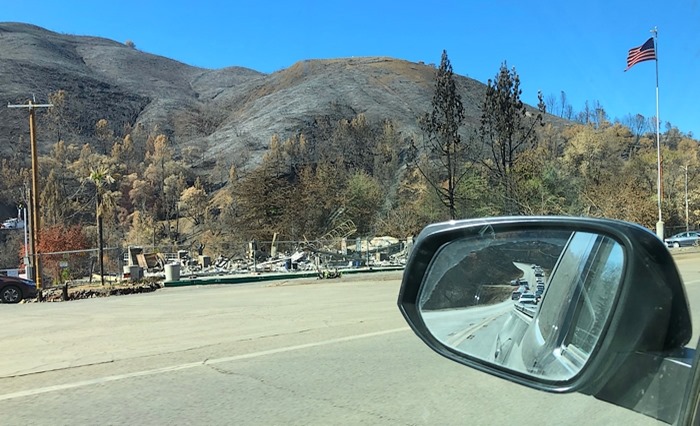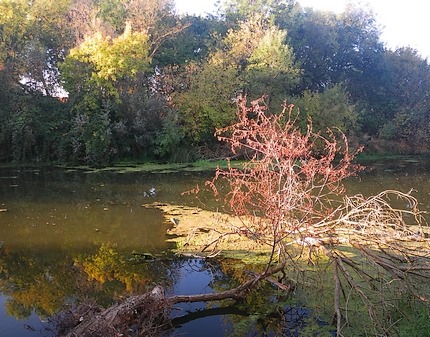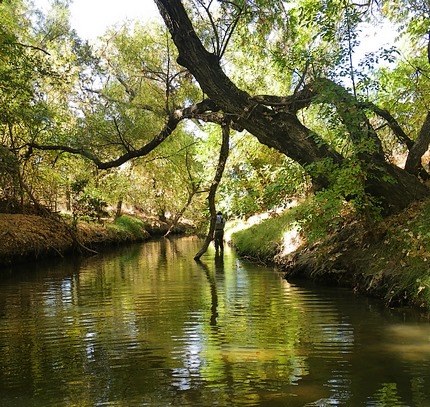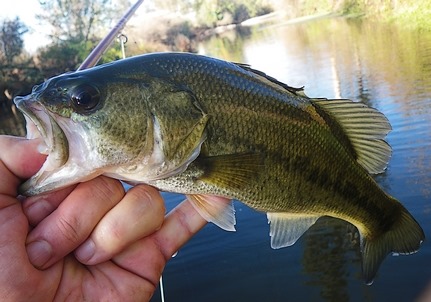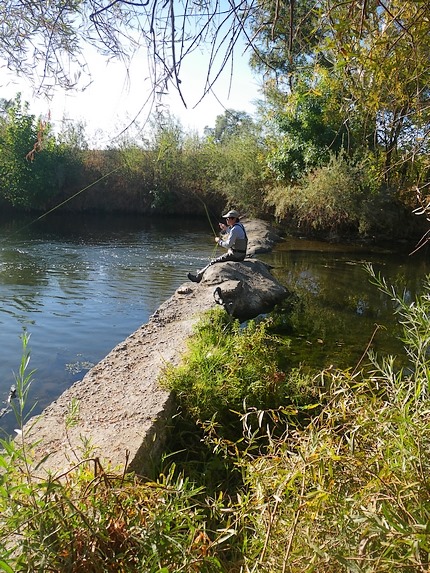After several decades of piscatorial success, it’s difficult to realize the only certainty is you can catch some fish with regularity, some are the result of good fortune, luck, or happenstance, and the balance can be explained by throwing a Big Mac and hook in front of a lot of foot traffic.
… it’s likely to be stepped on quickly, scorned by those that have eaten recently, yet eventually consumed by some unfortunate that is either too desperate or in too much of hurry to care much about the marks left by other’s soles …
That notion haunts my summer, as I recognize I’ve veered onto the path less traveled, and found myself in the deep end treading water.
My first failing was realizing that trout have occupied a place of great prominence because of their surroundings and the stunning mountainous areas they can be found. As a foe, they are largely predictable –and are are weakened due to a steady influx of federally funded variations that are less wary, climatic conditions that are less conducive to their survival, and the crush of forces present in the wildland-urban interface.
My second failing was thinking that the skills I’d spent so many decades accumulating while fly fishing for trout – would serve me in good stead when fishing in less pristine environments … some of those hard won skills transferred nicely, many did not.
The science is the same, the reasoning and deduction, the mechanics of casting, the understanding of flora and fauna and their lifecycles are unchanged, but the physics of tackle, water, and how the quarry makes use of terrain and cover all have to be rethought. Most importantly, how to overcome the adversity of large bodies of deep water and their ever-present wind. How to get flies within visual range of an ambush predator …versus throwing exacting imitations at fish that move from safety into the open to feed on the same set of insects at the same time each evening.
Pure Heresy for most trout fishermen, but for those of us that delight in suffering unimaginable tortures, big open water is an area fly fishing has never dallied with – and with good reason. Our tackle and its physical limitations, our unspoken preferences, and the genteelness of our pastime are ill suited to this environment.
Fly Tackle and its limitations
The weaknesses of fly tackle are well known. Long limber rods that are magnificent at preserving fine tippets and reducing shock, but cannot punch an 8 inch long, soaked rabbit streamer into even the slightest breeze. Wet marabou or fur strips combined with lead wire and heavy beads, strung on a heavy gauge 2/0 or 3/0 hook, and even experienced casters begin to blanch in the face of a breeze …
Sink rate is abysmal with fly tackle. The large diameter fly lines sink at a different rate than the monofilament tippet and heavy fly, and with each element of backing, line, leader, tippet, and fly, strange shapes are introduced between rod tip and hook point that add slack. Hook sets have to be exaggerated to move all that sunken line into a straight line capable of pushing a large hook through lip gristle.
Large open water has its own weather system, and an airless morning is promise of a stiff breeze in the afternoon. Casting physics means even the heaviest leader cannot sustain the weight of the large streamers and bulky poppers, and all casts (except those downwind) collapse at the transition from fly line to leader. Big wind resistant poppers work against the caster – as the properties that ensure they float – also guarantees their instability in flight. Big and bulky, guaranteed to puddle leader and prey to every gust of wind – rarely landing much beyond the fly line tip.
Terrestrial anglers are forced to fish in the direction that blows the fly line away from the body, as neither rod nor leader can control the instability of a large fly buffeted by a stiff breeze. After a few encounters between large hooks driven through larger arse cheeks, self preservation overcomes one’s lust of fish flesh.
Worse is that none of fly fishing’s quiver of tools can reliably determine depth, the kind and type of bottom substrate, nor cover enough water to prospect a large body of water with thoroughness. Fly anglers rely on a combination of bankside detritus and visual inference to surmise what they’re fishing over, and deep water isn’t always predictable given its opacity, the varied weed types, grasses, and sunken objects that may be present.
Not knowing what you’re fishing over also means you don’t know when to return there during periods of receding water. Disabled shopping carts and old Christmas trees are potential eyesores, but they provide surface area for weed growth and hiding places for minnows and other food, which draw in the big fish to linger.
Snobbery and the Proper Tool for the Proper Job
For large bodies of water the deck is already stacked in favor of the fish, so why handicap yourself by insisting on fly fishing purism? Big open water is perfect for fly anglers, but only after you know enough about the environment and your quarry to make the intersection of fish and fly tackle optimal.
Last year I spent the summer “drop shotting” the western side of Lake Berryessa, from the dam to the Pope Creek arm. “Drop Shot” fishing is simply constructing a leader containing one large shot and one 4.5” plastic worm, and walking that bait back to you once flung into the lake.
Each time that large split shot touched bottom it told me how deep the water was at the spot. Since most of my time was spent on the points and contours, I quickly learned where the deep water was versus the shallow flats.
My visual inspection of bank and substrate entering the water was enough to clue as to whether the bottom might be sandy or rocky, but adding the drop shot data told me how deep it was and whether there were underwater timbers, weed beds, or rocky boulders and ledges.
What was down below I snagged – and often. When I recovered the tackle it would have weeds from weed beds, or simply break off when snagged on timber. Watching the line pay out while chanting, “one thousand, two thousand, three …” gave me an approximation of depth, and if I caught fish it taught me what was down there, and occasionally by inference, why.
Fly fishing is not part of a triathlon for good reason. All of the rigmarole associated with line management and wading means fly fishing is a slow process for scouting big water. Throwing weighted lures and big plastic top water baits isn’t affected as much by wind, and an angler can cover a couple of miles of shoreline with an easy gait, where a fly caster has to constantly pause and strip out or reel in all those coils of line necessary to cast and retrieve.
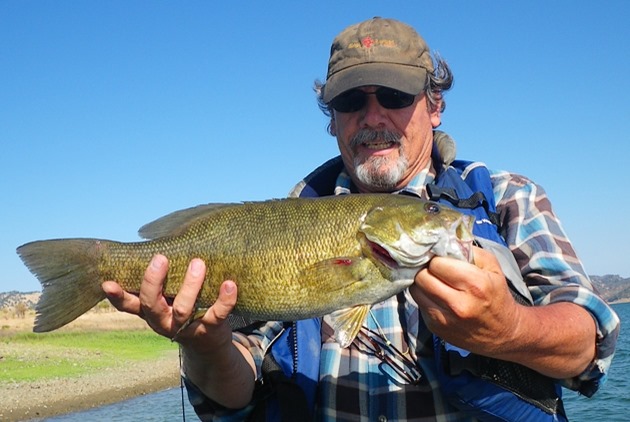
As a bonus to the data that different types of tackle provide, you’ll catch plenty of large fish, which is the hidden pot of gold of big lakes, they contain much bigger fish than small ponds or streams, and contain more of them as well. Where you catch them is as important as any other data element, given you’re looking to repeat that process with some consistency. Certain depths, or time of day, similar types of cover, anything that patterns where the big fish hold is essential to attempting to find them in other parts of the lake.
The outflow of Lake Berryessa is Putah Creek, which is the closest trout stream to San Francisco and the Bay Area. As such it has both New Zealand Mud Snails and is constantly pounded by an enormous contingent of fly fishing enthusiasts. None of which attempt the lake proper, and I’ve yet to see another fly fisherman plying the bank. I suspect it’s the big water as the source of their trepidation, given how many are wading only several hundred yards distant, yet none have ventured into the lake itself.
Bass aren’t like Trout, they’re moody, aggressive, and stubborn, sometimes all at once
We’ve all heard that Cutthroat’s are “stupid” and by comparison, Rainbow’s and Brown trout are finicky – yet all trout species share a great deal of similarities in their feeding behavior and survival instincts.
Bass species share some traits as well, but each species has unique traits that must be learned to catch them consistently. In the comparison, we might think bass overly aggressive when contrasted with trout, but the real difference is their infuriating ability to be moody, finicky, sullen, and shy – sometimes all at the same time.
I’ve seen enough bass behavior to be humbled routinely, and have rethought everything I’ve heard about bass, given my experiences in the last couple of years.
Lake Berryessa contains three species of bass and two species of “mule”. Spotted Bass, Largemouth Bass, and Smallmouth Bass inhabit the lake, as well as two mule variants of Spotted Largemouth, and Spotted Smallmouth. Each mule resulting from the interbreeding of two of the three species.
Purebred bass can spawn again, but the mule bass cannot reproduce.
Bass decide not to eat and in the blink of an eye the entire lake appears barren. The infuriating part is they do this whenever you decide to go fishing, or when a storm front makes the barometer quiver, or when the Standard station up the highway runs out of Doctor Pepper. Understanding the psyche of this beast is likely to drive the rational angler to drink – and it’s a matter of enduring their fits of pique, versus truly understanding them.
Spotted Bass move around more than the other species, and can be present and absent within minutes. Smallmouth love rocky bottoms and rock outcroppings, and largemouth seem to be comfortable everywhere, except where you’re fishing.
The food chain is different, and you need to own big and blustery
While bass have access to many of the insects that trout covet, and it’s likely they dine on bugs when small, once they get larger their tastes run to fish, frogs, other bass, sunfish, small dogs, and unwary children. Bugs simply don’t provide enough protein to keep a large bass fed.
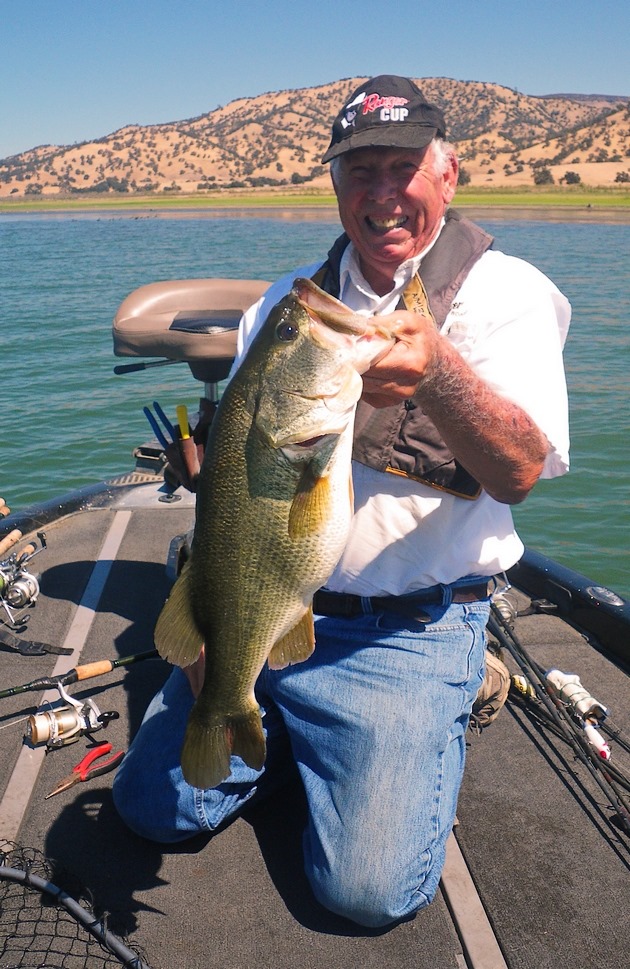
Fish like this don’t eat bugs, they eat 6 inch plugs fished noisily, with much commotion
With baitfish being the food staple, suddenly our traditional caddis, midge, mayfly, repertoire is largely useless as we’re pressed into learning threadfin shad behavior, bait balls, and where minnows sleep at night.
Structure and vegetation offer cover for small fish, but so does the muddy water churned off the sandy points by boat wakes, and the milky water resulting from the swells breaking when pushed by wind.
Big bass behave similarly to Stripers or similar ocean predator. They try to gather and bunch minnows against natural structure like bays and points, and then stuff themselves before the ball squeezes past them into open water. Bait fleeing a big predator are visible as minnows leap into the air, making the chase as visible as a rising trout.
The amount of surface commotion caused by baits is important. Big deer hair poppers get waterlogged, and chug through the water with less and less disturbance. Sinking flies are heavy as lead due to a combination of weighting, size, and waterlogged materials. Traditional bass flies leave a bit to be desired, as the size ranges they’re available in are too small. Custom ties are needed for big water, and closed cell foam, wine corks, or anything that keeps its noise level is preferred to the hair flies.
There’s little question that noisy flies that burble and pop are among the most consistent producers. The issue is their delivery and the understanding that large fish are often in shallow water based on the prey and their lifecycle.
A Summer of frustration and data gathering
Most of this summer has been spent learning all the details associated with successful bass fishermen, and watching them use conventional tackle designed for big water and bigger fish. The result has been a lot of frustration, a lot of perspiration, and great deal of fun.
Having spent a lot of my youth casting 3/8 ounce and 5/8 ounce plugs at the Golden Gate Angling & Casting Club (under the watchful eyes of Jon Ray), I’m finally getting to hone those accuracy skills in anger – versus GGACC’s static plastic targets.
Certainly the scorched hillsides are less scenic than piney woods, but they’re only a quarter tank distant, therefore cheaper, there’s a lot more of it, it’s less than an hour away, and I rarely see another angler, all things not found in the Pristine upper elevations.
Summation of a misspent summer:
Developing the tool suite to harvest environmental data is the first requirement of open water.
Knowing the foibles, weaknesses, and strong suites of your quarry is the second requirement of open water.
Knowing where the fish are and why they’re there is the third rule of open water.
Insects are not a factor, learn minnow behavior and observe them in the quiet coves to learn their swimming motion, their feeding preferences, and where the hide (when you throw a pebble).
Don’t use a screwdriver to hammer nails. Adapt and incorporate fly fishing only in those areas where it’s able to perform optimally is the culmination of the all the above, and the desired end game for us aficionados.

